The New York Times (NYT) has claimed that the abortion pill is safe because “More than 100 scientific studies, spanning continents and decades, have examined the effectiveness and safety of mifepristone and misoprostol, the abortion pills” and allegedly concluded that “the pills are a safe method for terminating a pregnancy.” Abortion pills not only harm women, but they also end the lives of innocent preborn babies, prompting Live Action founder and President Lila Rose to tweet, “Are drugs that have killed over 5 million preborn children safe? The pro-abort bias at the NYT is ridiculous.”
Are drugs that have killed over 5 million preborn children safe?
— Lila Rose (@LilaGraceRose) April 3, 2023
The pro-abort bias at the NYT is ridiculous. pic.twitter.com/KK3jzp6uno
There are some issues: the Times didn’t include their list of studies for potential scrutiny, researchers for the report have been associated with Big Abortion, and the studies spanned 30 years — and may not necessarily reflect protocols and dosages used today. The article was published following arguments in Alliance for Hippocratic Medicine (AHM) v. U.S. Food and Drug Administration (FDA), a federal abortion pill lawsuit requesting that the FDA pull the drug from the market.
More than 100 scientific studies show that abortion pills are safe. But anti-abortion groups have asked a federal judge to block the use of the drugs, arguing that they are dangerous. https://t.co/FwvID9RKdw
— The New York Times (@nytimes) April 1, 2023
“Safe is not defined in the abortion industry studies,” Dr. Ingrid Skop, Vice President and Director of Medical Affairs for Charlotte Lozier Institute (CLI), told Live Action News. “But one medical definition of safety is ‘freedom from danger, risk or injury,’” Skop claimed. “Clearly there are many risks and injuries documented following chemical abortions.” The Times described CLI as “an arm of Susan B. Anthony Pro-Life America” while failing to properly connect its own selected researchers to pro-abortion groups.
New York Times failed to list studies
NYT failed to publish all of the studies they claimed their researchers reviewed. Instead, the paper wrote, “The papers were cited in five systematic reviews of medication abortion, and were published from 1991 to 2023. The Times also included research studies used by the F.D.A. in its medical reviews of the drugs, and those cited by the plaintiffs and defendants” in their lawsuit. In the image (below), the paper revealed a handful of studies they claimed to review, and in several instances those studies cited their funding source as “anonymous.” Live Action News previously noted, multiple abortion pill studies have cited anonymous funding sources; in one instance, where the journal required that all funding sources be identified, the “anonymous foundation” turned out to be an abortion pill investor: the Buffett Foundation.
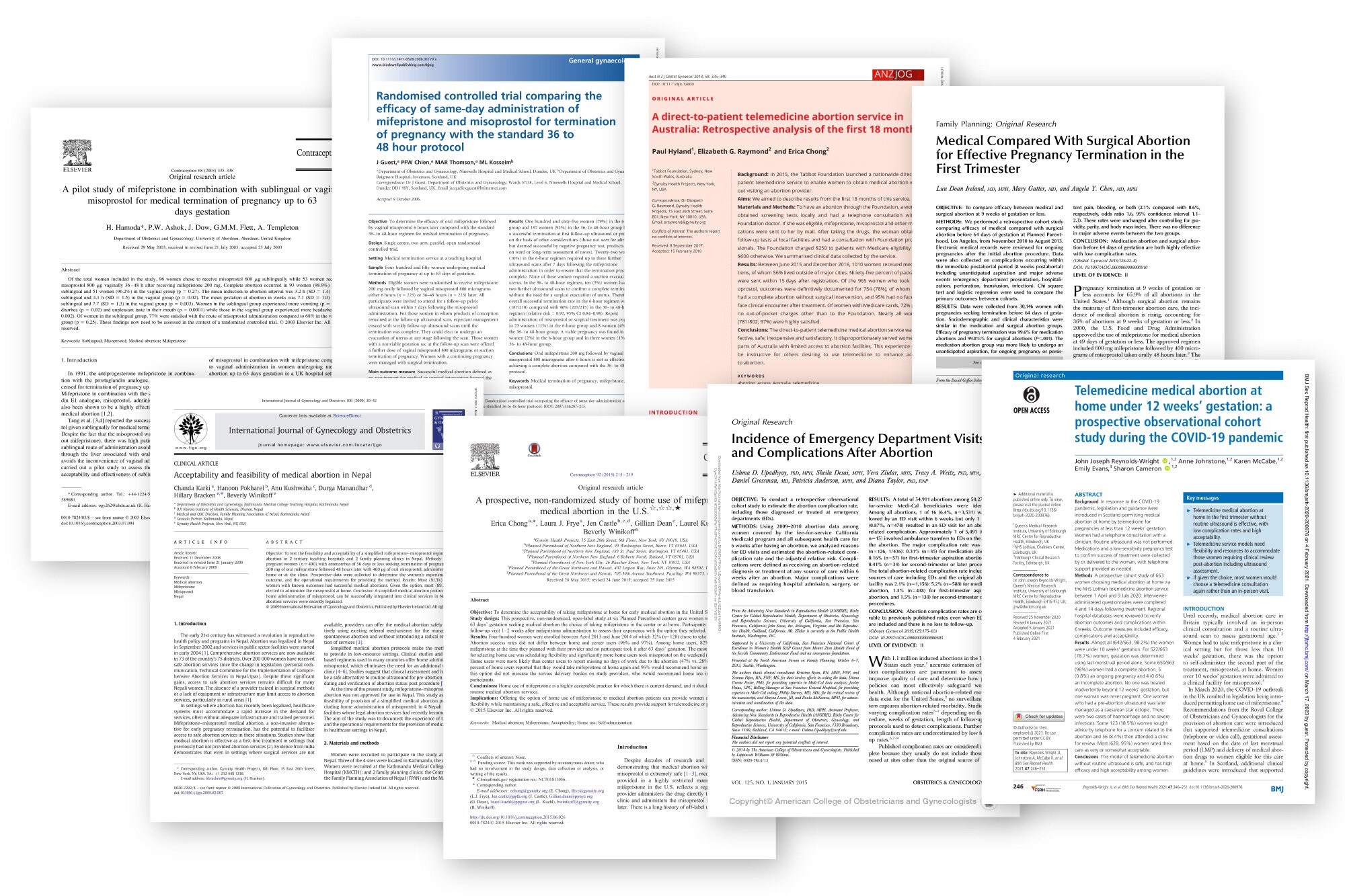
Studies used by New York Times claiming abortion pill safety
Live Action News also documented multiple times that incestuous funding by investors (Packard and Buffett Foundations) in the U.S. abortion pill manufacturer (Danco) and its generic equivalent (GenBioPro), is being funneled to sponsors of clinical trials, location sites, and journals publishing studies touting abortion pill safety. In addition, Live Action News has exposed how multiple authors of abortion pill studies are on the payrolls of Danco and/or GenBioPro, and some authors belong to organizations which have been funded by the abortion pill manufacturer. A few examples are listed below:
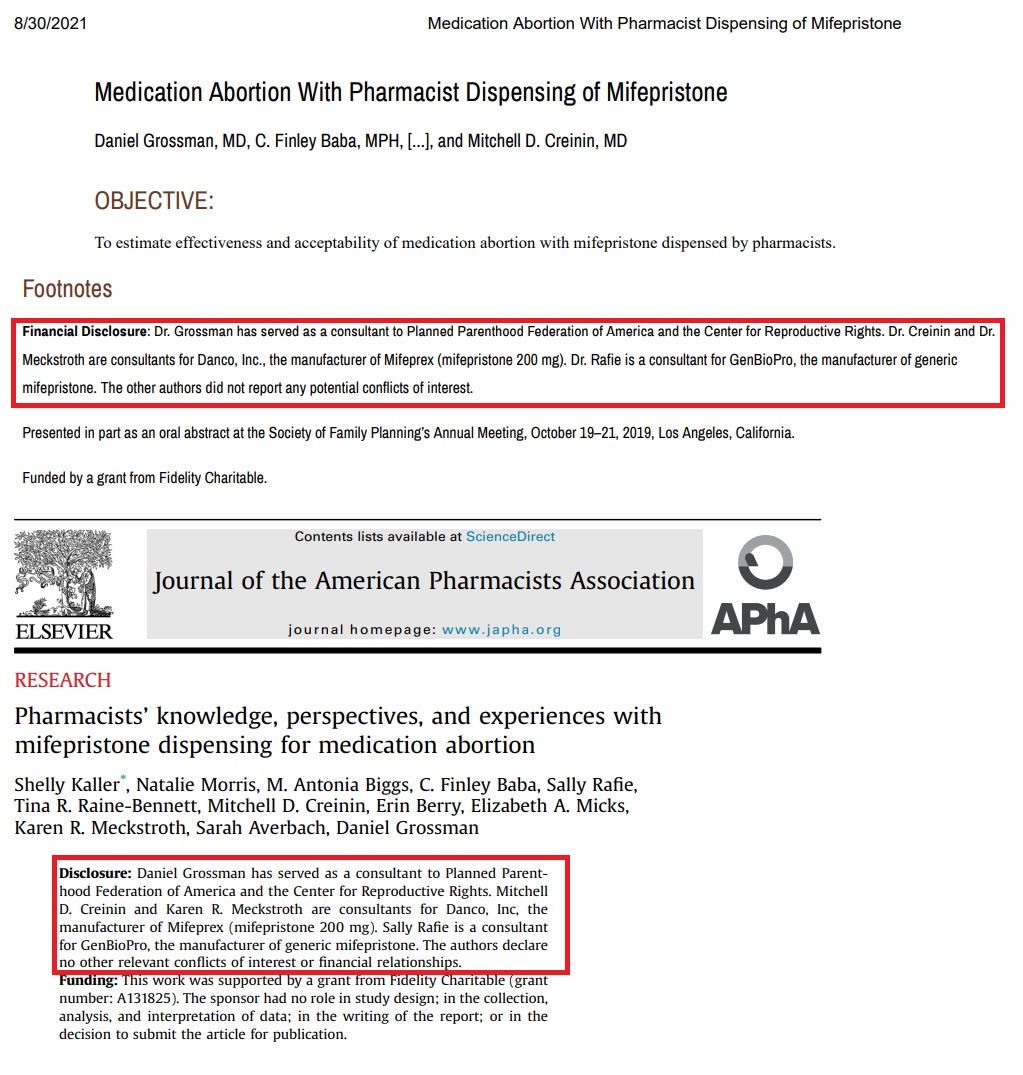
Abortion pill study authors Mitchell Creinin, Karen Meckstroth, consultants for Danco Sally Rafie consultant for GenBioPro and Daniel Grossman for PP
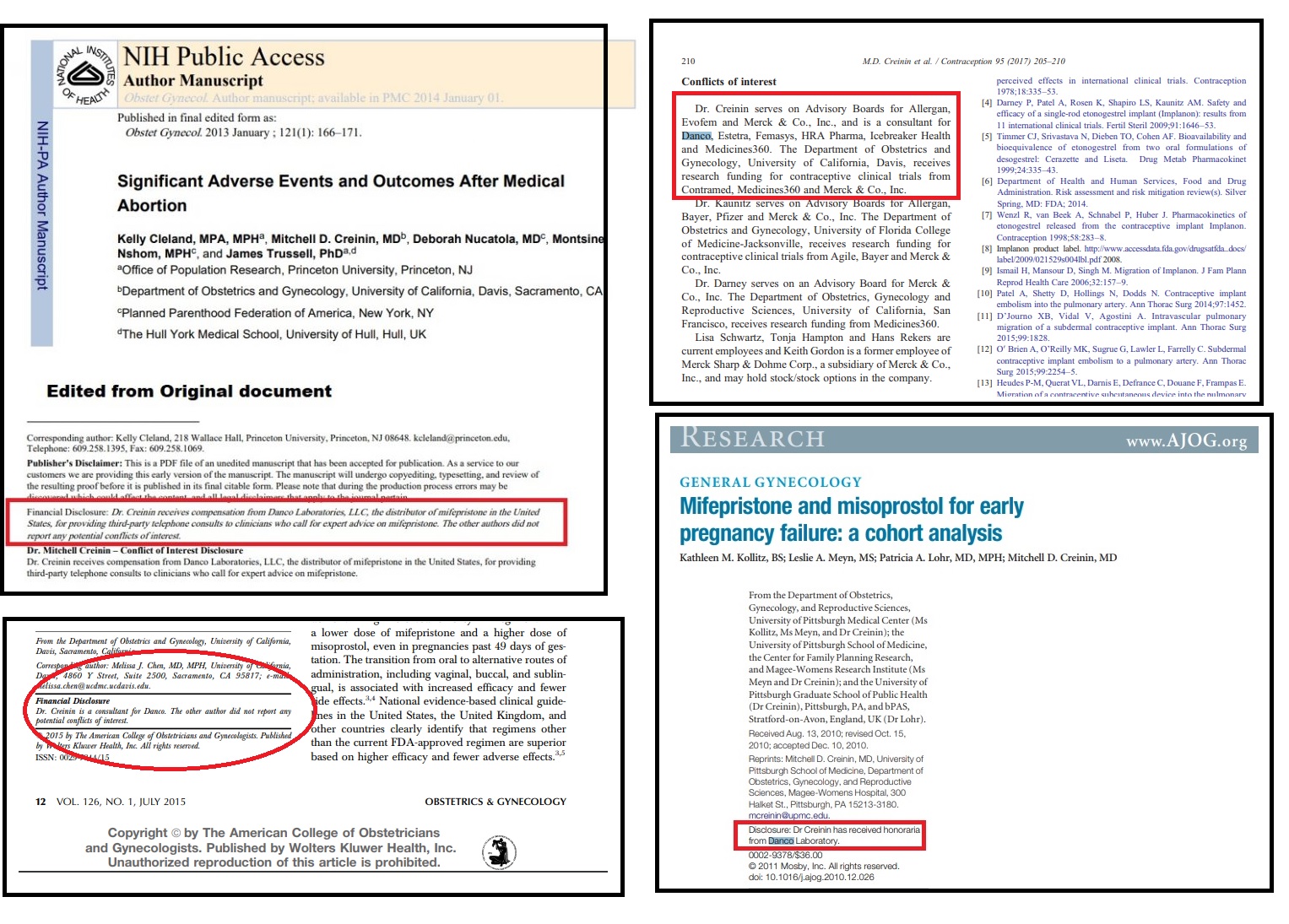
Study attacking APR authored by Mitchell Creinin funded by Danco the abortion pill manufacturer
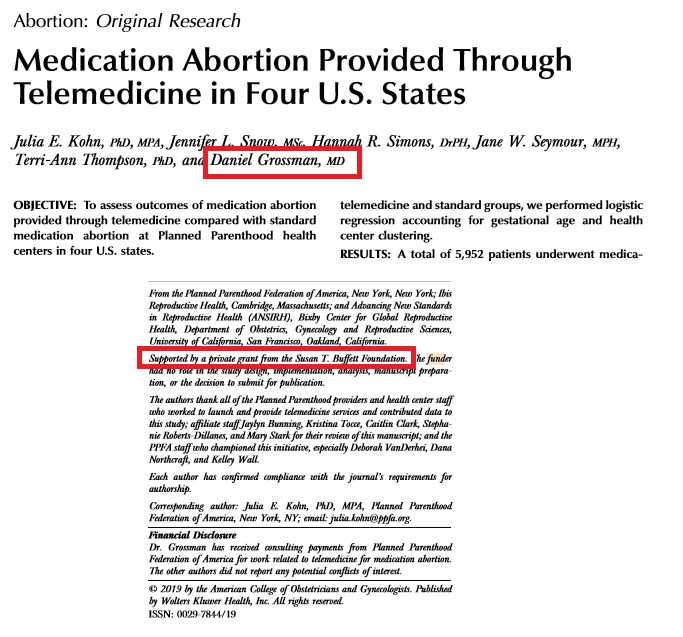
Buffett founded abortion pill Telemed study by Daniel Grossman
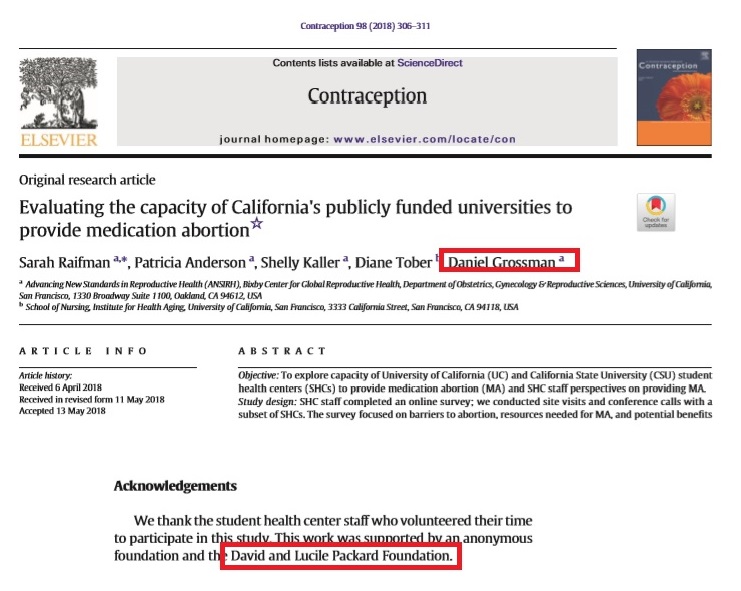
Packard funded abortion pill on campus study by Daniel Grossman
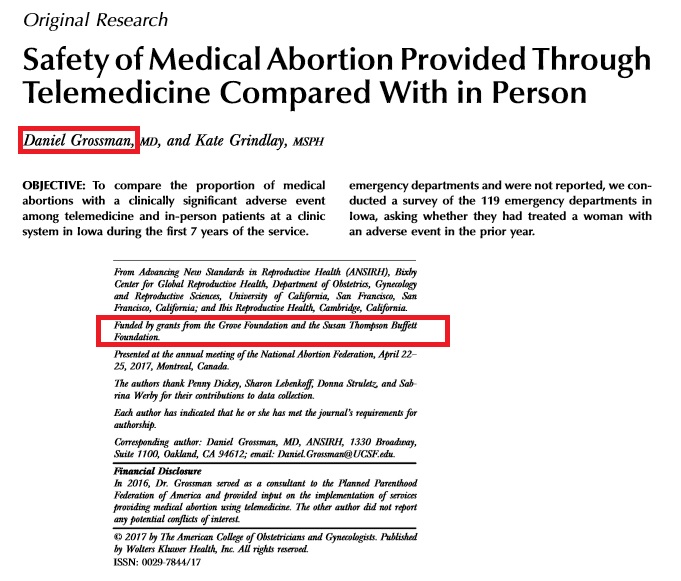
Buffett founded abortion pill study by Daniel Grossman
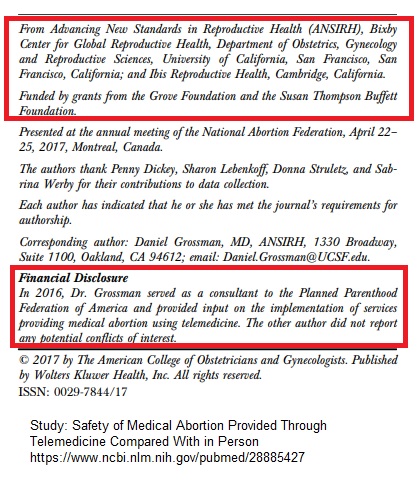
Grossman abortion pill Study funded investor of Danco
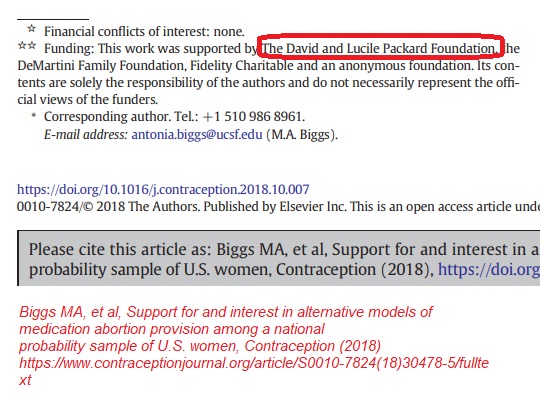
Packard Foundation self managed abortion pill study (Image: 2018 study from Journal Contraception)

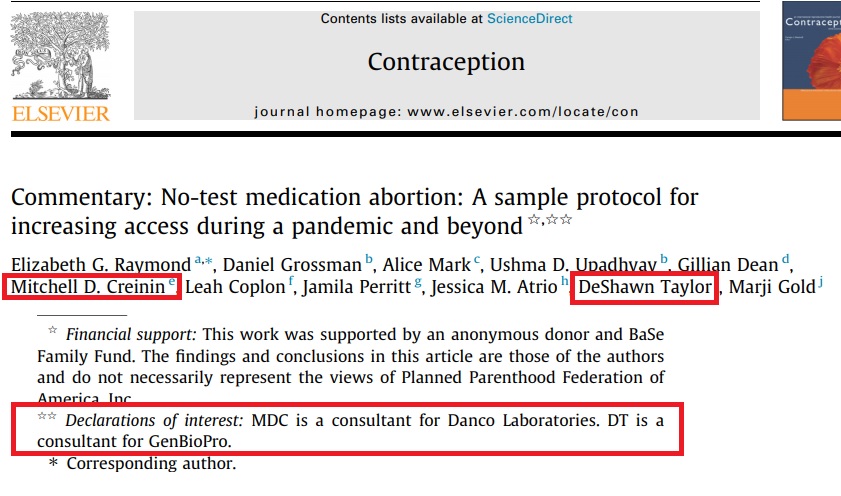
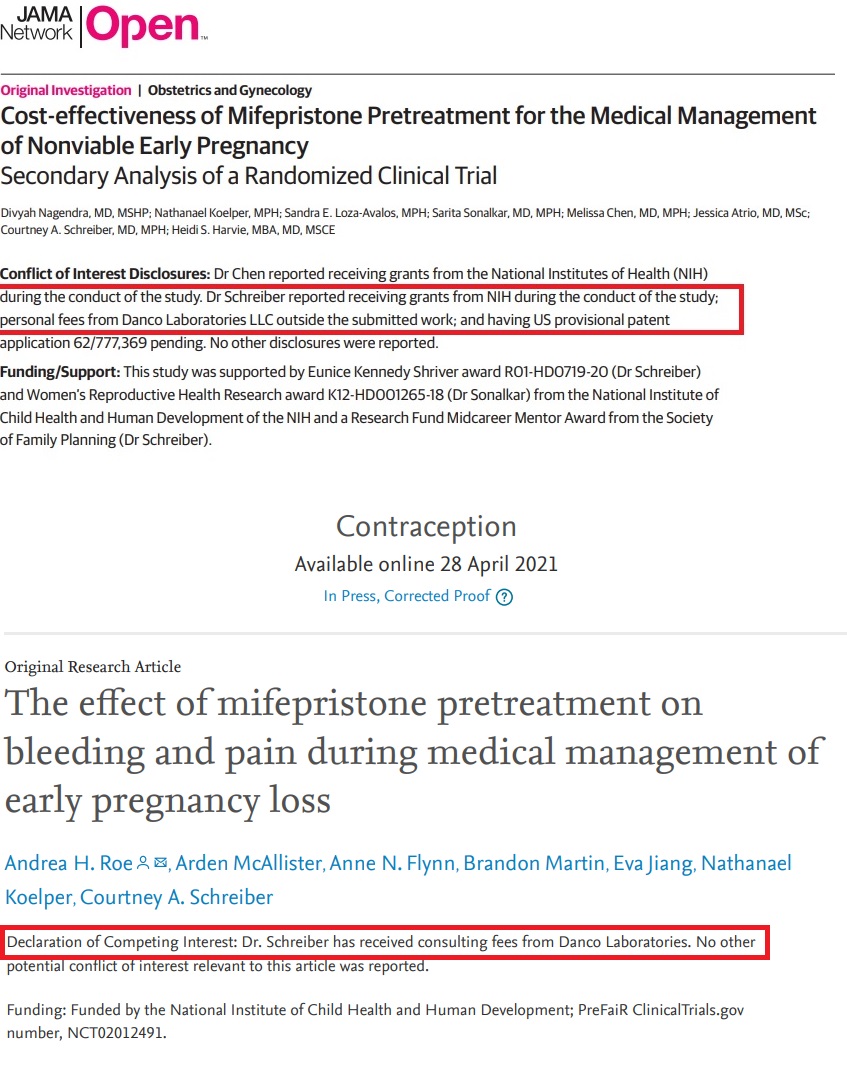 Researchers tied to Big Abortion
Researchers tied to Big Abortion
Most of the New York Times’ “researchers” either commit or profit from abortion — a fact the paper did not appear to make clear. For example, several are associated with Advancing New Standards in Reproductive Health (ANSIRH) and/or the University of California. ANSIRH was founded by abortionist Felicia H. Stewart and is funded by the Packard Foundation, which provided early financial assistance to Danco, as well the Hewlett Foundation, whose stated goal has been to expand abortion. ANSIRH publishes workbooks on abortion training and states online that “ANSIRH is a program within the UCSF Bixby Center for Global Reproductive Health[.]” The Bixby Center trains abortionists through its Ryan Residency Training Program.
The University of California system is heavily funded by the Packard Foundation as well as the Buffett Foundation; both are large investors in the abortion pill. Vox recently claimed that “Warren Buffett is the largest philanthropic funder of abortion groups in the US… he has poured more than $4 billion into reproductive rights, including abortion-specific groups, since 2000.”
New York Times “researcher” Dr. Melissa J. Chen is assistant professor at the University of California, Davis, which was a location site for pro-abortion Dr. Daniel Grossman’s abortion pill pharmacy study, and is funded by original investors of Danco. UC Davis also sponsored a clinical trial which attempted to discredit abortion pill reversal (APR). Chen was a co-author of the study, which was terminated between August and September 2019.
Ushma Upadhyay oversaw “The California Home Abortion by Telehealth (CHAT) Study” which took place at ANSIRH. Upadhyay was an early advocate of the “no test/no touch” protocol for the abortion pill, which eliminated important preliminary labs, testing, and ultrasounds potentially placing women in harm’s way but likely used in studies the New York Times reviewed. Upadhyay is a professor at the University of California San Francisco (UCSF) and has argued that the FDA should “remove as many barriers as possible” on the abortion pill. She is working on a study for “late period pills” which, according to her protocol, “involves taking 3 doses of misoprostol” and attempts to conflate a late period with chemical abortion:
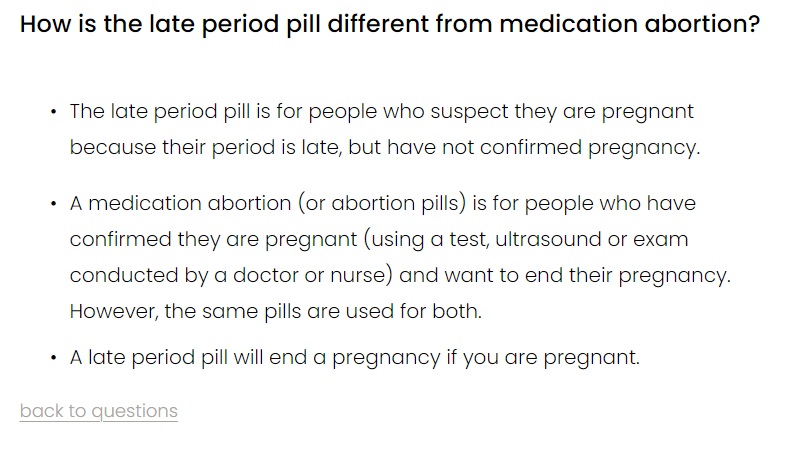
Late Period Pill is an abortion
Leah R. Koenig, data analyst with ANSIRH, previously worked at the Bill and Melinda Gates Foundation, a massive funder of DKT International, which markets abortion pills worldwide. Her LinkedIn page reveals she has also worked for the pro-abortion Guttmacher Institute as well as the Population Council.
Sarah Raifman, also associated with ANSIRH, worked with Dr. Daniel Grossman on a survey on women’s attitudes about “advance provision” and over the counter dispensing of abortion pills published by the pro-abortion journal Contraception. Her studies have been funded by the David and Lucile Packard Foundation, a Danco investor. Her LinkedIn page reveals she worked for UCSF’s Bixby Center as well as for the Population Council.
Dr. Nathalie Kapp is chief medical officer at the International Planned Parenthood Federation (IPPF).
Dr. Maria I. Rodriguez, professor of obstetrics and gynecology at Oregon Health & Science University, allegedly claimed that her state needs more – not fewer – places that commit abortion. Her public Twitter page reveals that she provides “abortion care.”
Proud to defend #reproductiverights and provide all women the #abortion care they need. Thank you for always having our back #RBG. pic.twitter.com/fBzQ5yjuVo
— Maria Rodriguez (@Mirodriguez731) August 27, 2020
Finally, the New York Times also relied upon Dr. Oskari Heikinheimo, professor of obstetrics and gynecology at the University of Helsinki, to contradict some of the claims made by the pro-life plaintiffs in the ADF lawsuit. But the paper failed to tell readers that Heikinheimo not only offers “abortion care” but has co-authored a radical paper condemning conscientious objection to committing abortion. In that paper, Heikinheimo and his co-authors wrote that “Health systems and institutions that prohibit staff from providing abortion or contraception services are being discriminatory[,]” claiming that “The patient’s rights to life and bodily security surely out-weigh the healthcare worker’s right to conscience…” (emphasis added).
The report suggested society “should deem it as ‘dishonourable disobedience,’ an ethical breach that should be handled in the same way as any other professional negligence or malpractice, or a mental incapacity to perform one’s duties.” None of these “researchers” are unbiased sources.
Small Sample Size
“In consultation with medical researchers, The New York Times reviewed these 101 studies, which together covered more than 124,000 abortions in the first trimester,” the paper wrote. “The studies varied in sample size, up to as many as 19,000 patients,” NYT claimed. But what does this mean in the overall scope of abortion pill use? “The U.S. Food and Drug Administration reported that during the period since it approved the regimen in 2000 through June last year, approximately 5.6 million women in the United States took the pills and 28 have died, or 0.0005 percent. The agency reported that some of those deaths may have been because of other causes,” NYT wrote.
But if we use the same math, the study sizes cited by NYT are also small. 19,000 patients and 124,000 abortions represent no greater than .34% of the 5.6M women who used the pill in the U.S. and just 2.2% of abortions.
The New York Times, in consultation with medical researchers, reviewed studies covering more than 124,000 abortions in the first trimester. The studies spanned continents and decades. pic.twitter.com/5TFKhdCiqF
— The New York Times (@nytimes) April 1, 2023
Complications likely underreported
An op-ed written by Erik Baptist, senior counsel at the Alliance Defending Freedom (ADF) who argued the case on behalf of the plaintiffs, discussed safety concerns and cited a review of 42,000 first-trimester chemical abortions which found that more than 1 in 6 women suffered from severe bleeding after taking the abortion pill, and “[a]nother review of 18,000 chemical abortions found that nearly 8 percent of first-trimester chemical abortions failed to kill the baby—meaning that a woman would need surgery if she wanted to complete the abortion,” he wrote.
NYT dismissed those “complications” as “common and expected” and seemed to brush them off as nothing more than bleeding. Yet, a TelAbortion study conducted by the pro-abortion Gynuity Health Project (GHP) revealed that 6% of women faced complications resulting in visits to the ER or urgent care. And data from the UK mirrored that complication rate. In 2020, abortion pills took the lives of nearly 500,000 preborn babies while sales from the pill regimen comprised an astounding 53% of nationally reported abortion numbers, according to updated data published by Guttmacher Institute researchers. Using the previously mentioned 6% figure of potential complications, it is likely that nearly 30K women per year could experience some form of complication serious enough to warrant a visit to an emergency department. Complications of the abortion pill are not required to be reported to the FDA — just deaths.
And complications or deaths from women who present to an emergency department rather than abortion facility may never be reported because there has never been a federal requirement to report abortion complications. Today, abortion insiders are advocating that women lie when presenting to medical facilities for abortion pill complications and to claim they are experiencing a natural miscarriage. In addition, some are suggesting that ER doctors falsify documents regarding those complications. This further muddies any chance that accurate data on abortion pill complications will be known.
Study protocols likely not being followed today
Studies reviewed by NYT allegedly spanned 30 years. Over that time period, abortion pill protocols and dosages as well as gestational limits have changed, making some of the NYT’s studies unlikely to reflect today’s chemical abortion protocols. The FDA approved the drug up to 7 weeks gestation in 2000, and later extended the limit to 63 days (9 weeks). Then in 2016, the FDA increased the gestational limit again to 10 weeks (70 days). This indicates the likelihood that some studies in NYT’s unpublished list could be grossly outdated.
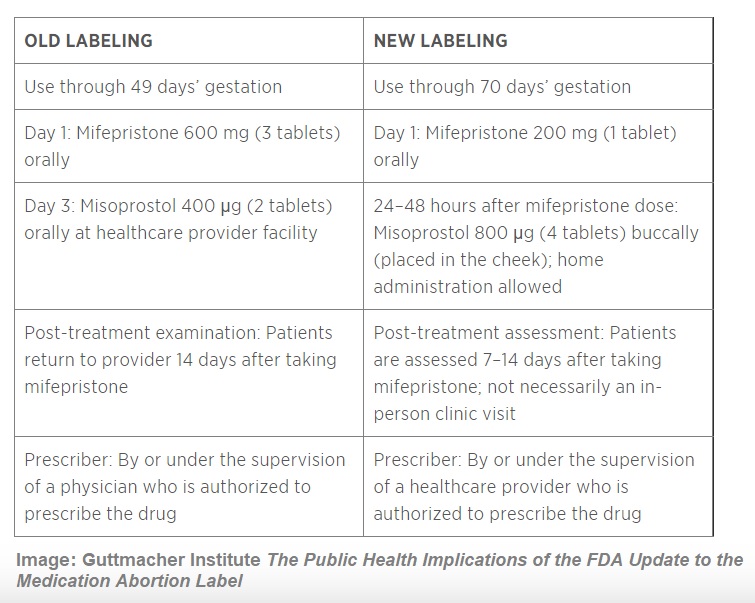
2011 to 2016 FDA changes to Mifeprex the abortion pill (Chart credit: The Guttmacher Institute)
While the New York Times looked at multiple studies spanning multiple decades, today, the abortion industry is flouting many of the approved protocols and safety requirements (known as REMS) put in place by the FDA, risking women’s safety. These off-label measures previously resulted in serious infections – some leading to women’s deaths.
Abortionists today are rarely ruling out dangerous ectopic pregnancies (required under REMS) before prescribing the drug. They are veering away from a more effective two-drug regimen of mifepristone and misoprostol and replacing it with an unapproved one-drug regimen of misoprostol alone. And while the FDA’s REMS requires prescribers to properly date a pregnancy, the abortion industry is prescribing these drugs to women who aren’t even pregnant.
The reckless abortion industry is also prescribing the abortion pill well past the FDA’s 70 day/10 week gestational limit, a point the NYT acknowledged, but failed to elaborate on, when it wrote, “The drugs are typically used through the first 12 weeks of pregnancy” (emphasis added). The media outlet later added that “the pills are about 95 percent effective.” But the NYT failed to tell readers that this efficacy rate only applies to early abortions at 9 weeks or less. In fact, at 11 weeks of pregnancy, Planned Parenthood admits that the abortion pill fails 13 percent of the time — nearly double the failure rate for the abortion pill given just two weeks earlier. And a systematic review revealed that when the abortion pill is used at 12 weeks, the failure rate rose to about 16%, an increase of nearly 12% when used before the FDA-approved limit of 10 weeks.
“These are no more risky than if you had a surgical procedure from the beginning,” Dr. Adam R. Jacobs, the medical director of complex family planning at Mount Sinai Hospital in New York, told the Times. “Still very safe, with a low risk for complications.”
But NYT conveniently failed to note that Jacobs is the “Ryan Residency Family Planning Program Director” and has served on the boards of Planned Parenthood of New York City as well as Physicians for Reproductive Health funded by George Soros, another abortion pill investor.
Today, testimony from multiple doctors treating women for abortion-pill complications confirm that the “frequency of complications… is increasing significantly.” And even abortion-supporting emergency department doctors presented the case of a woman who recently took the abortion pill and was later treated in the ER for an undiagnosed ectopic pregnancy. Abortion pill politics and conflicts of interest should never trump transparency and safety, no matter what the New York Times tries to claim.







